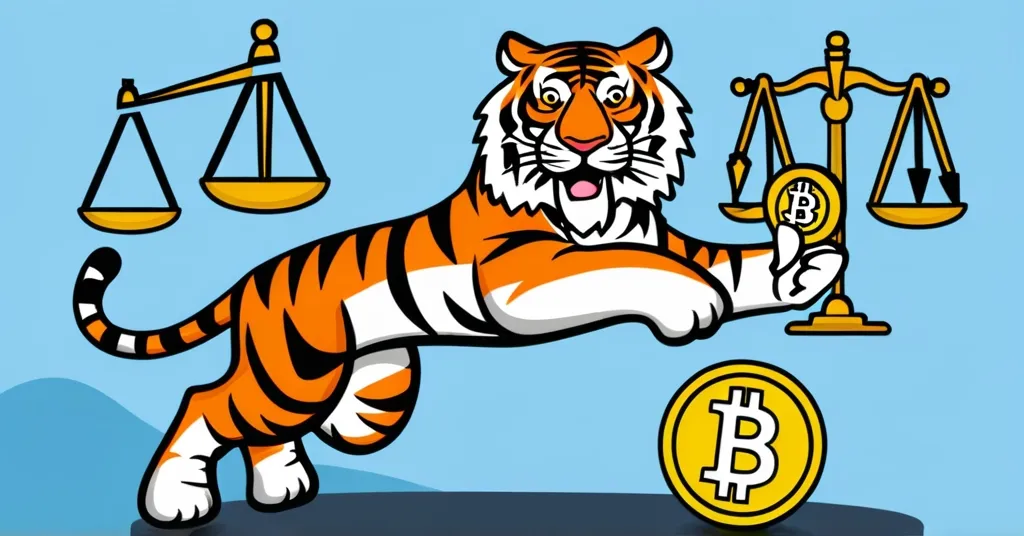2024: India’s Crypto Leap Forward with ITAT, Orissa HC Rulings and Kotak’s Nod

2024 Sees Favorable Rulings for Digital Assets in India
In 2024, India has taken significant strides forward in recognizing and legitimizing digital assets, balancing optimism with the realities of stringent taxation. The year has brought not only judicial clarity but also high-profile endorsements, signaling a shift in perception that could reshape the future of cryptocurrency in the country.
- ITAT clarifies pre-2022 crypto gains tax
- Orissa High Court legitimizes digital assets
- Uday Kotak endorses digital currencies
- Sebi pushes for multi-regulator digital asset oversight
Imagine you sold your Bitcoin before April 2022. Thanks to a landmark ruling by the Income Tax Appellate Tribunal (ITAT), you can now breathe a sigh of relief. The ITAT has clarified that gains from digital currencies sold before that date are to be treated as capital gains. Capital gains, simply put, is the profit you make from selling an asset like a cryptocurrency. Edul Patel, co-founder of Mudrex, explains, “The ITAT’s ruling is a significant step in bringing clarity to crypto taxation in India. By recognizing crypto as capital assets, it provides much-needed relief for investors who sold crypto before 2022, allowing them to benefit from long-term capital gains tax rates.” However, the party ends there. Post-April 2022, the government’s flat 30% tax rate on digital asset gains, with no option to offset losses, has been a real crypto-killer, dampening spirits in the community.
While some might argue that the ITAT’s ruling is a mere band-aid on a gaping wound, it’s undeniable that it offers a lifeline to many early investors. It’s a game-changer for those who jumped into the crypto pool before the tax tsunami hit.
Adding to the momentum, the Orissa High Court threw another lifeline to the digital asset industry by declaring that dealing in digital assets is not illegal under local law. Justice Sasikhanta Mishra stated, “Cryptocurrency is not money within the meaning of Prize Chits and Money Circulation Schemes (Banning) Act and the investment made by the general public in cryptocurrency cannot partake the nature of deposit within the meaning of OPID Act.” This ruling not only legitimizes digital assets but also sends a strong signal to potential investors that the government, at least in some quarters, views digital currencies as a legitimate financial tool. While the court’s decision might be seen as nuanced—focusing on the legal definition of money rather than endorsing crypto outright—it’s a step in the right direction.
The endorsement from Uday Kotak, the founder of Kotak Mahindra Bank, further fuels the optimism. Kotak’s view is clear:
Digital currency is an alternate market currency and a necessary counter hedge for governments worldwide who misbehave and are irresponsible on the fiscal or monetary side over long periods.
His stance highlights the potential of digital currencies to serve as a hedge against economic mismanagement, adding a layer of credibility to their role in modern finance. Yet, one must wonder if Kotak’s support is enough to sway the government’s cautious approach.
On the regulatory front, the Securities and Exchange Board of India (Sebi) is pushing for a multi-regulator approach. Sebi chairperson Madhabi Puri Buch warned, “If our well-regulated market cannot compete with the crypto world and cannot say we also offer you tokenization and instantaneous settlement over the medium term, I won’t even say long term, you should expect investors to move.” Tokenization, for those new to the term, refers to representing assets as digital tokens on a blockchain, while instantaneous settlement means transactions are processed immediately without delays. This push for faster trade settlements and a multi-regulatory framework aims to keep pace with the dynamic digital asset market. However, skeptics might argue that this is the government playing catch-up with a technology that’s already light-years ahead.
Despite these strides, the Indian government has yet to lay out a comprehensive regulatory framework for Virtual Digital Assets (VDAs). Finance Minister Nirmala Sitharaman has clarified that while cryptocurrencies are not legal tender, they are considered assets for trading and speculation. The government’s cautious approach emphasizes the need for international collaboration to prevent regulatory arbitrage and effectively evaluate the risks and benefits associated with VDAs. Critics might say this is a classic case of bureaucracy moving at a snail’s pace while the crypto world zooms past.
While the journey towards full acceptance and regulation of digital assets in India is far from over, the steps taken in 2024 mark a pivotal moment. The digital asset market in India is increasingly aligning with regulatory demands, hinting at a maturing ecosystem ready to embrace the future of finance. Yet, the question remains: Will India’s regulatory framework be able to keep up with the rapid evolution of this sector?
Historical Context
The journey to 2024’s favorable rulings began with the introduction of a stringent tax regime in 2022, which imposed a 30% flat tax on digital asset gains and a 1% tax deducted at source (TDS) on transactions above Rs 10,000. This led to a significant impact on the digital asset market, with the Esya Centre estimating a potential loss of $1.2 trillion in trade volume on domestic exchanges. Against this backdrop, the recent rulings and endorsements represent a shift towards recognizing the potential of digital assets while navigating the complexities of regulation.
Counterpoints and Concerns
While the rulings and endorsements are seen as positive developments, critics argue that the government’s slow pace in establishing a comprehensive regulatory framework could hinder growth. Some worry that the lack of clear guidelines might lead to regulatory arbitrage, where investors move to jurisdictions with more favorable regulations. Additionally, the flat 30% tax rate is seen by many as overly punitive, potentially driving crypto enthusiasts to less regulated spaces. The counterpoint to Kotak’s endorsement is that while digital currencies may serve as a hedge, their volatility raises concerns about their suitability as a stable alternative to traditional currencies.
Key Takeaways and Questions:
- What was the significant ruling by the Income Tax Appellate Tribunal (ITAT) in 2024?
The ITAT ruled that gains from the sale of digital currencies before April 2022 are taxable under capital gains, providing clarity on crypto taxation.
- How did the Orissa High Court’s ruling impact the perception of digital assets in India?
The ruling established that dealing in digital assets is not illegal, providing legal legitimacy and potentially encouraging more participation in the market.
- What was Uday Kotak’s stance on digital currencies?
Uday Kotak endorsed digital currencies as an “alternate market currency” and a necessary hedge against irresponsible fiscal and monetary policies.
- What regulatory approach did the Securities and Exchange Board of India (Sebi) suggest for digital assets?
Sebi suggested that multiple regulators should monitor digital asset trading in India, with different agencies overseeing different aspects of the market.
- Why has India not introduced comprehensive regulatory guidelines for Virtual Digital Assets (VDAs)?
India has cited the need for international collaboration to prevent regulatory arbitrage and to effectively evaluate risks and benefits of VDAs.



